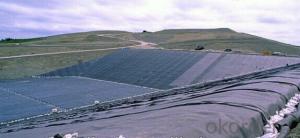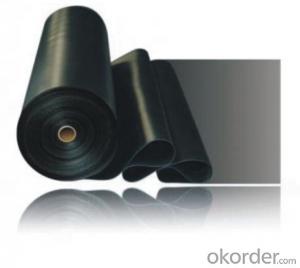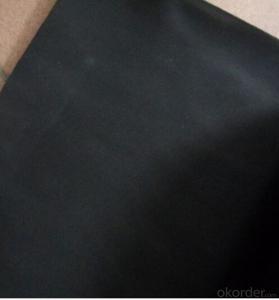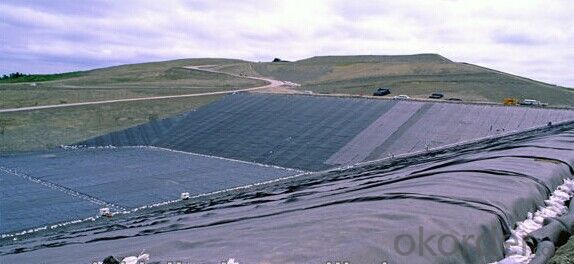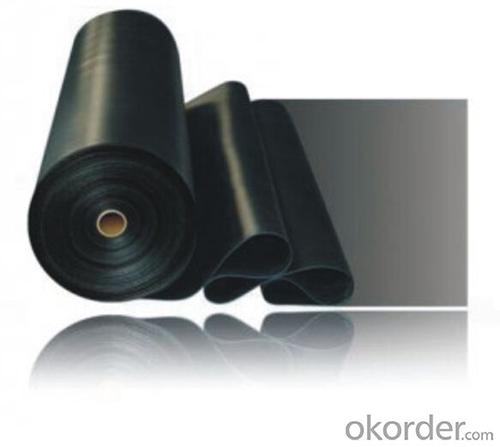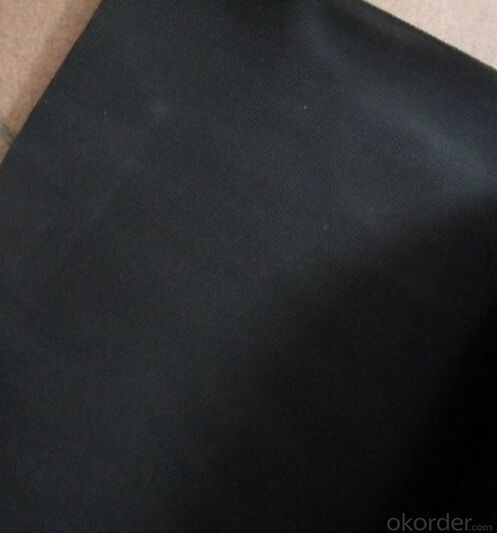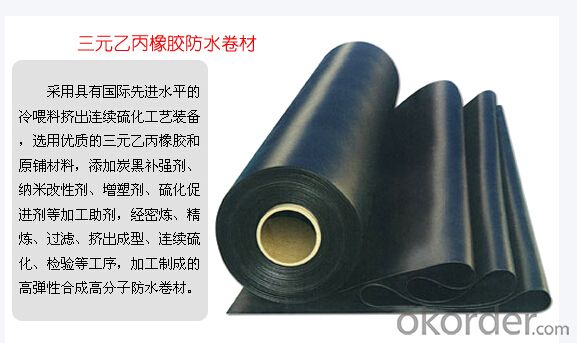EPDM Pond Liner Manufacturer In China for 10 Years Experience
- Loading Port:
- Qingdao
- Payment Terms:
- TT OR LC
- Min Order Qty:
- 2000 m²
- Supply Capability:
- 10000 m²/month
OKorder Service Pledge
OKorder Financial Service
You Might Also Like
1. Introduction of EPDM Waterproofing Membrane:
EPDM pond liners adopt the international advanced level cold feed extrusion continuous vulcanization process for the integration of production equipment and technology so that the system density of products is better and the products have no bubble sooth surface, no performance difference between vertical and horizontal.
2. Specification of EPDM Waterproofing Membrane:
Type | EPDM |
Material | EPDM Rubber |
Thickness | 1.2mm,1.5mm,2.0mm |
Length | 20m/roll |
Width | 1.2m |
Usage | roof/walls/bathroom/tunnel/basement/bridge/road/underground, |
Application method | Hot melt |
Length | 20m |
Surface | Smooth surface,fleece surface |
3. Application of EPDM Waterproofing Membrane:
Widely used in roofs, basement, toilet ,swimming pool, and all kinds of industry and civil building
waterproofing, reservoir, bridge, underground, tunnel and dam waterproofing ,especially to the keystone
waterproofing projects which is durability, high corrosion resistance and easy deformation
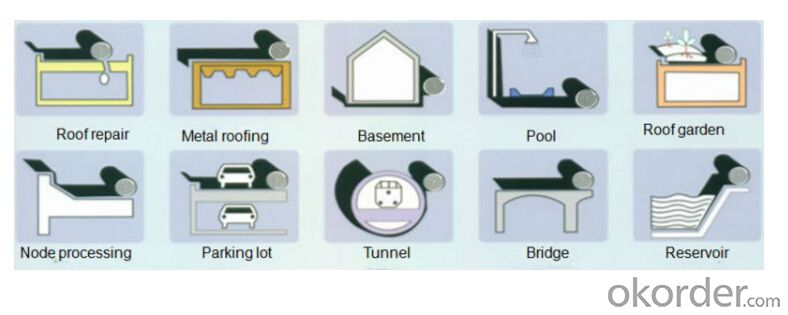
4. Some photos:
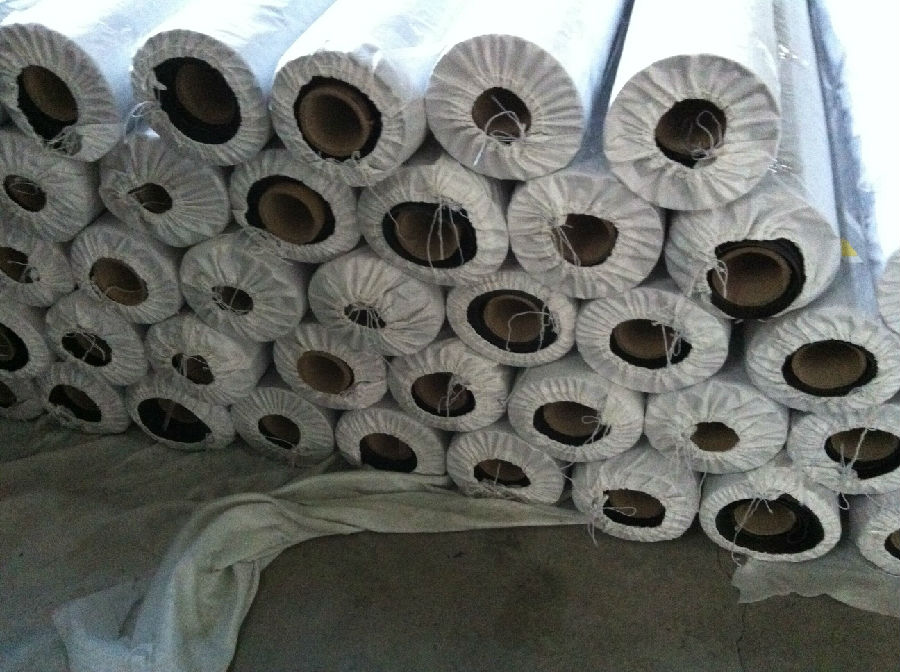
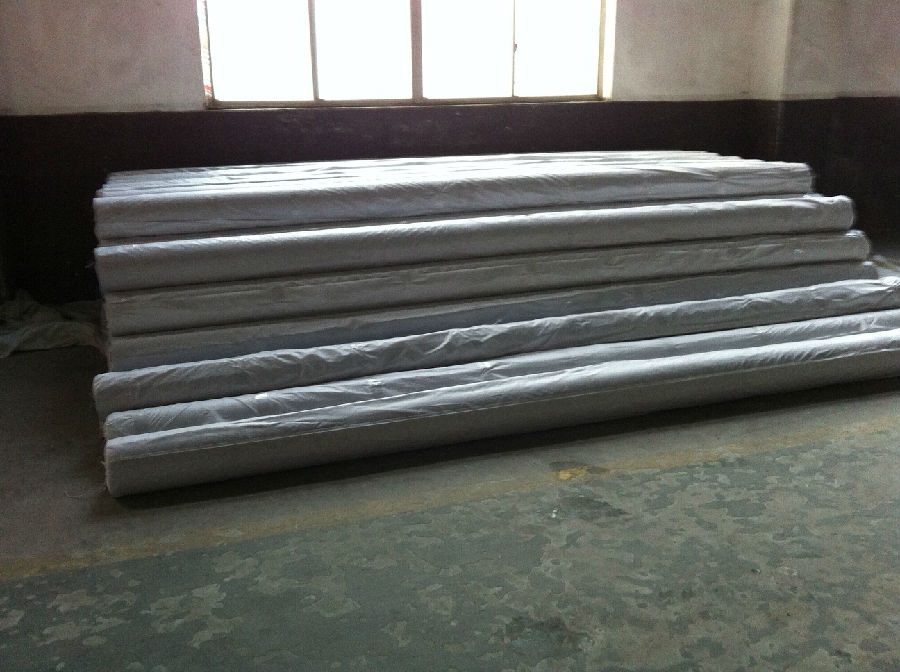
- Q: Are there any specific building code requirements for using a waterproofing membrane?
- Different jurisdictions have specific building code requirements when it comes to using a waterproofing membrane. These requirements often include certain standards that the membrane must meet, as well as instructions for its installation provided by the manufacturer. The building codes may specify the type of membrane to be used, its minimum thickness, and the method by which it should be installed. For instance, the International Building Code (IBC) mandates that waterproofing membranes must be listed and labeled by an approved testing agency. The code also demands that the membrane be installed in a way that offers continuous protection and can withstand expected structural movements and environmental conditions. Apart from the type and installation requirements, building codes may also outline the procedures for testing and inspecting waterproofing membranes. This is done to guarantee that the membrane is correctly installed and will effectively prevent moisture intrusion, thus safeguarding the building against potential damage and deterioration. To ensure compliance with these requirements and to have a waterproofing membrane that meets the necessary standards, it is crucial to consult the local building code or seek assistance from a qualified professional.
- Q: Can a waterproofing membrane be used on tunnels with railway systems?
- Yes, a waterproofing membrane can be used on tunnels with railway systems. The membrane helps to prevent water ingress and moisture damage to the tunnel structure, ensuring the safety and longevity of the railway system.
- Q: Can a waterproofing membrane be applied to uneven surfaces?
- Indeed, it is possible to apply a waterproofing membrane to surfaces that are not perfectly even. However, the degree of success and effectiveness achieved may vary depending on the extent of the unevenness. To ensure optimal results, it is crucial to adequately prepare the surface by eliminating any loose debris, addressing significant gaps or holes, and smoothing out any elevated points or ridges. Additionally, certain types of waterproofing membranes possess superior flexibility and are more adept at adapting to uneven surfaces compared to others. Therefore, it is highly advisable to seek guidance from a professional waterproofing contractor who can evaluate the surface condition and recommend the most suitable waterproofing membrane tailored to the specific unevenness.
- Q: What is the typical installation process for a waterproofing membrane?
- The typical installation process for a waterproofing membrane involves several steps. First, the surface that needs to be waterproofed is thoroughly cleaned and prepared. This may involve removing any existing coatings, debris, or loose materials from the surface. It is important to ensure that the surface is smooth, clean, and free from any contaminants that could affect the adhesion of the membrane. Next, any cracks, holes, or imperfections in the surface are repaired. This may involve filling in cracks with a suitable filler or patching compound, and smoothing out any rough areas. It is crucial to have a solid and even surface to ensure the proper installation and effectiveness of the waterproofing membrane. Once the surface is prepared, a primer is often applied. The primer helps to improve the adhesion between the surface and the membrane. It is typically applied with a brush or roller, following the manufacturer's instructions. After the primer has dried, the waterproofing membrane is installed. There are different types of membranes available, such as sheet membranes or liquid-applied membranes. Sheet membranes are typically rolled out onto the surface and adhered using a suitable adhesive or mortar. Liquid-applied membranes are applied using a brush, roller, or spray equipment, creating a continuous and seamless barrier. During the installation process, it is important to ensure that the membrane is installed correctly, with proper overlap or seams, and that any penetrations or transitions are properly treated and sealed. This includes areas such as corners, edges, drains, and pipe penetrations, where additional detailing may be required to create a watertight seal. Once the membrane is installed, it is important to allow it to cure or dry according to the manufacturer's instructions. This ensures that the membrane reaches its full strength and waterproofing capabilities. Finally, after the membrane has cured, a protective layer or coating may be applied to further enhance the durability and longevity of the waterproofing system. This may involve applying a topcoat, sealant, or protective barrier to protect the membrane from UV rays, foot traffic, or other potential sources of damage. Overall, the typical installation process for a waterproofing membrane involves surface preparation, application of a primer, installation of the membrane, detailing and sealing, curing, and potentially applying a protective layer. It is important to follow the manufacturer's instructions and consult with a professional if necessary to ensure a proper and effective installation.
- Q: Does a waterproofing membrane also protect against moisture and humidity?
- Indeed, moisture and humidity are effectively counteracted by a waterproofing membrane. Its main objective is to establish a shield that thwarts the infiltration of water into surfaces like walls, floors, or roofs. By proficiently obstructing water, it additionally aids in averting the intrusion of moisture and humidity into the safeguarded vicinity. This aspect is of utmost importance in regions susceptible to water-related harm, such as basements, bathrooms, or outdoor structures. The membrane functions as a defensive coating, guaranteeing the interior's dryness and freedom from dampness provoked by moisture or humidity.
- Q: Can a waterproofing membrane be used for plant rooms and mechanical equipment areas?
- Yes, a waterproofing membrane can be used for plant rooms and mechanical equipment areas. These areas often require protection from water and moisture damage, and a waterproofing membrane can provide an effective barrier to prevent leaks and water infiltration.
- Q: Can a waterproofing membrane be used for a deck?
- Yes, a waterproofing membrane can be used for a deck. Waterproofing membranes are commonly used to protect surfaces from water damage by creating a barrier that prevents water penetration. When applied to a deck, a waterproofing membrane can help to prevent water from seeping into the underlying structure, which can cause rotting, warping, and other forms of damage. It is important to choose a waterproofing membrane that is specifically designed for outdoor use and can withstand the elements, such as UV rays, temperature fluctuations, and heavy foot traffic. Additionally, proper installation and maintenance are crucial for ensuring the effectiveness and longevity of the waterproofing membrane on the deck.
- Q: Is a waterproofing membrane resistant to saltwater or salt damage?
- Yes, a waterproofing membrane is typically resistant to saltwater or salt damage. Waterproofing membranes are designed to provide a barrier against water and moisture, and they are commonly used in various applications where exposure to saltwater or salt is expected, such as in marine environments or near coastal areas. These membranes are often made from materials that are specifically formulated to withstand the corrosive effects of saltwater or salt. Additionally, the installation of a waterproofing membrane includes proper preparation and sealing techniques to ensure its resistance to saltwater or salt damage. However, it is important to note that the specific resistance of a waterproofing membrane to saltwater or salt damage may vary depending on the type and quality of the membrane used. Therefore, it is recommended to consult with a professional or manufacturer to ensure the appropriate membrane is selected for the specific application and environment.
- Q: Can a waterproofing membrane be used on storage tanks?
- Yes, a waterproofing membrane can be used on storage tanks. Waterproofing membranes are designed to create a barrier that prevents water or other liquids from penetrating through the surface they are applied to. When applied to storage tanks, these membranes can provide protection against leaks, corrosion, and damage caused by moisture. They are commonly used in various industries, including oil and gas, chemical, and water treatment, to ensure the integrity and longevity of storage tanks. Additionally, waterproofing membranes can be tailored to meet specific requirements, such as resistance to chemicals, UV exposure, or high temperatures, making them suitable for a wide range of storage tank applications.
- Q: Are waterproofing membranes resistant to high temperatures?
- Waterproofing membranes can vary in their resistance to high temperatures depending on the specific material used. Some waterproofing membranes are designed to withstand high temperatures without losing their effectiveness or integrity. These membranes are often made from materials such as modified bitumen or synthetic rubber, which have high temperature resistance properties. However, it is important to note that not all waterproofing membranes are resistant to high temperatures. Some membranes made from PVC or other thermoplastic materials may have limitations when exposed to extreme heat. Therefore, it is crucial to consult the manufacturer's specifications and guidelines to ensure that the chosen waterproofing membrane is suitable for the intended application and can withstand the anticipated temperature conditions.
Send your message to us
EPDM Pond Liner Manufacturer In China for 10 Years Experience
- Loading Port:
- Qingdao
- Payment Terms:
- TT OR LC
- Min Order Qty:
- 2000 m²
- Supply Capability:
- 10000 m²/month
OKorder Service Pledge
OKorder Financial Service
Similar products
Hot products
Hot Searches
Related keywords
